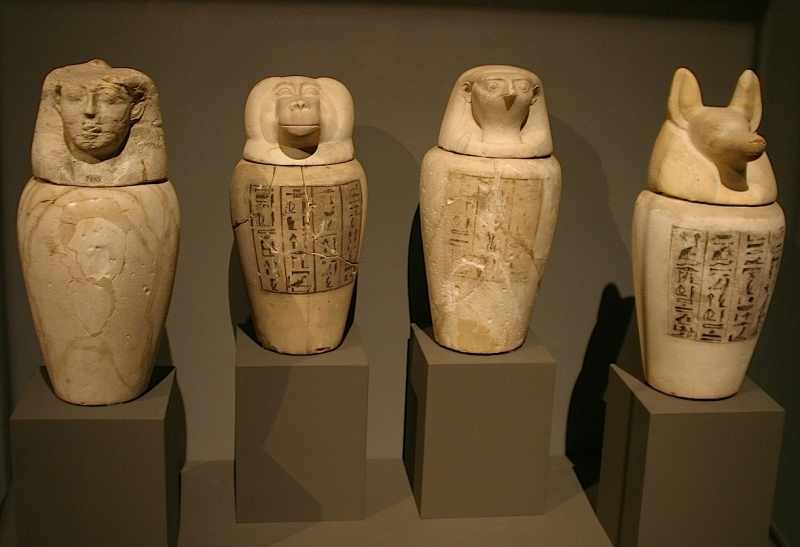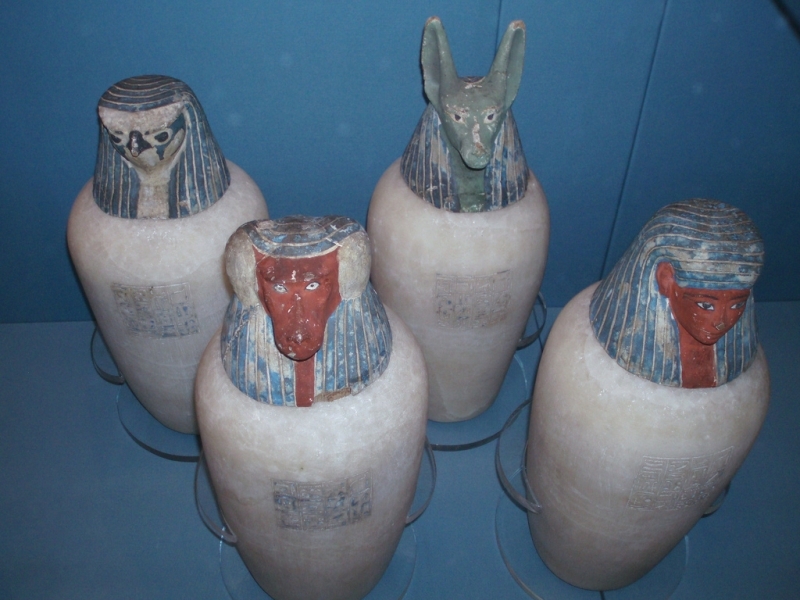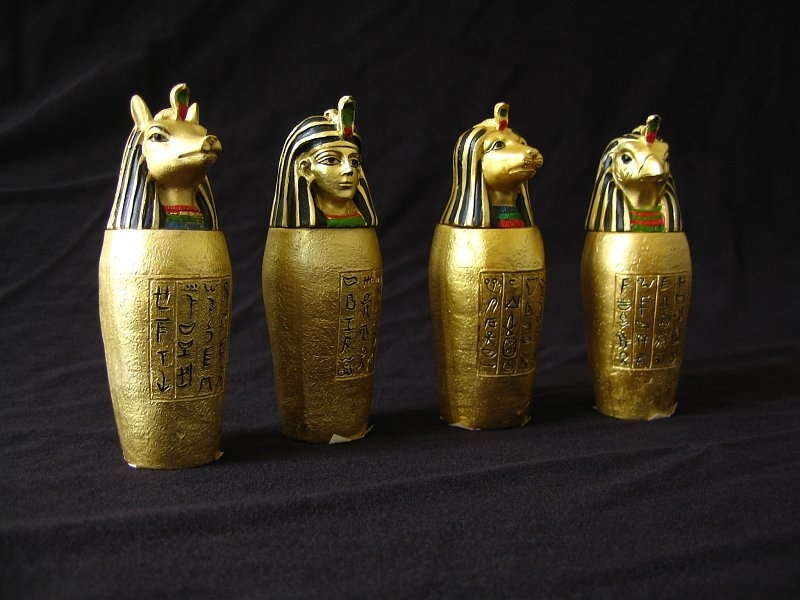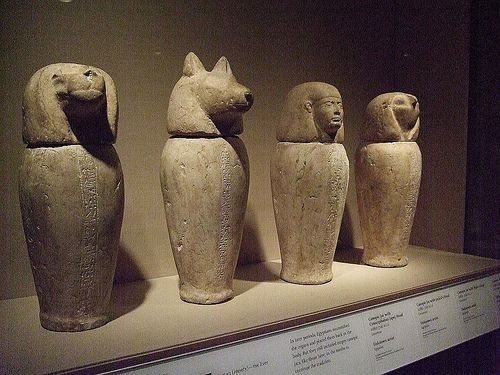Egyptian Canopic Jars: What are Canopic Jars?
- What are canopic jars?
- What four gods were associated with the Canopic jars?
- What were Canopic Jars used for in ancient Egypt?
- What are the canopic jars made of?
- Horus
- The Four Sons of Horus
Ancient Egyptians followed careful steps when it came to burial rituals, a series of factors were taken into consideration while preparing the body of a deceased Pharaoh or King.
The canopic jars were an important part of this process as they were the way Egyptians believed that each respective god would keep determined organs of the body ready for the afterlife.
What are canopic jars?
Canopic jars also known as jars of the old kingdom were the containers used to hold the internal organs that were removed from the dead body before mummification.
During the Old Kingdom, when mummification was in its infancy, the jars that served this purpose were stone vessels with a plain lid. It was not until the first intermediate period that the jars acquired a different human-headed stopper. From this time, too, the packages of viscera placed inside them were sometimes decorated with human-faced masks. Then, from the nineteenth dynasty onwards, the stoppers of the jars were each shaped like the head of one of the minor funerary deities known as the “four sons of Horus” depending on which organ it contained.

What were Canopic Jars used for in ancient Egypt?
Canopic jars are the jars that were used to store the mummified organs separately from the body itself. This was a very important part of the mummification process; as Egyptians were one of the first civilizations to believe in an afterlife.
They believed that the preservation of the body was essential in order to enjoy eternal life and for that reason they created the mummification process. Once the pharaohs and kings died the process of mummification started, where all internal organs were removed with an incision on the left side of the body.
What four gods were associated with the Canopic jars?
Canopic jars were associated with four ancient Egyptian Gods: Hapy, Imsety, Duamutef or Qebhsenef.
What are the canopic jars made of?
Canopic jars were made of clay, and depending on which organ it contained, its head had the shape of one of the four gods.

Horus (Hor, Horos) The god of The Sky
The youngest son of Osiris and Isis, Horus, the god of the sky, took the shape of a falcon with the sun and moon for eyes. Horus was the earliest royal god and one of the most important gods of Ancient Egypt since he wears a double crown as both the god of the heavens and the divine embodiment of kingship. A protector god who attacked and destroyed evil, Horus was shown either as a falcon or as a man with falcon heads.

The Four Sons of Horus
Horus had 4 sons, Hapy, Imsety, Duamutef, and Qebhsenef. It was the job of these four deities to protect the internal organs of the deceased. The organs removed from the body were embalmed, anointed and wrapped in linen ready to be placed in the jars for safekeeping. Ancient Egyptians firmly believed that the deceased required his or her organs to be in good condition in order to be reborn into the Afterlife.
Hapy: Protected by Nephthys, with a baboon-headed lid, Hapy, guarded the lungs.
Imsety: Protected by his mother Isis and with a human form, Imsety guarded the liver.
Duamutef: Protected by Neith, and with a jackal form Duamutef guarded the stomach.
Qebhsenef: Protected by his mother Serket, with a form of a hawk, Qebhsenef guarded the intestines.

Come and see the treasures of Ancient Egypt and much more through one of our Egypt Tours.
